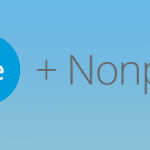Salesforce.org has many accomplishments of which it should be proud. There are a variety of nonprofits using Salesforce today and enjoying significant benefits. That said, Salesforce.org has some significant challenges to overcome, none of which have to do with the core Salesforce platform.
This is Part 3 of a three-part series. See the introduction for links to all three parts.
This lengthy post is divided into three parts:
- The challenges facing Salesforce.org
- How Salesforce.org plans to address the challenges
- Salesforce for Nonprofits in the Future: The Bottom Line
Each part is clearly marked with a large heading (such as seen immediately below).
The challenges facing Salesforce.org
For the sake of simplicity, in this post, we will be using “Salesforce.org” to refer to both the current organization and the “Salesforce Foundation”, its predecessor.
Improving its understanding of how nonprofits work
Salesforce.org has not always demonstrated a thorough knowledge of the nonprofit sector. This has placed unnecessary obstacles in the way of building strong and trusted relationships with some potential and current customers, partners (developers and implementers), and others within the nonprofit community.
This lack of knowledge has also translated into some poor products. Early releases of the Nonprofit Success Pack (NPSP) lacked important features. NGO Connect was highly problematic from a marketing standpoint and often from an implementation standpoint. Now Salesforce.org has pulled back from NGO Connect and doubled down on NPSP. This progression has caused some confusion and distrust within the community.
Improving its sales approach to the nonprofit community
Nonprofits have had some disappointing experiences with Salesforce.org’s account executives. Too often, account executives have not given adequate consideration as to whether Salesforce is the best solution for the customer—making the platform seem like the hammer for every nail.
Additionally, account executives have occasionally turned off potential customers with aggressive sales tactics, giving the impression that meeting quotas is more important to the organization than truly being helpful and informative.
Clarifying Salesforce.org’s mission
The nonprofit community knows that Salesforce.org helps connect organizations to free or discounted Salesforce licensing and other forms of grants. But beyond that, what is Salesforce.org? Does it support application developers and implementers, or compete with them? Does it want to support nonprofit change with technology, or dictate to nonprofits how their organizations should operate?
Salesforce.org needs to clarify its mission—and how that mission translates into action. Uncertainty regarding Salesforce.org’s mission priorities and agenda has led to a certain level of distrust that Salesforce.org is struggling to overcome.
How Salesforce.org plans to address the challenges
For those who might think we’ve been piling on Salesforce.org a bit, let us make this explanation: trust is important. Salesforce.org’s most significant uphill battle is building that trust—with nonprofits, with partners, with individual developers, and with thought leaders and influencers.
The other elephant in the room, Blackbaud, has faced a similar set of challenges. Blackbaud created frustrations that resulted in some customers turning to Salesforce. Salesforce.org’s behavior has had some of those same customers turning back to Blackbaud, which they now find more attentive and technologically progressive.
Building, supporting, and listening to the community
In our interview with Salesforce.org CEO Rob Acker, the bulk of the conversation focused on building and nurturing a community in which Salesforce.org actively participates as a listener and connector first and an application provider second.
Salesforce was founded on the fundamental principle that when your customers are tied to your road map they tell you what you need. So we listen to our customers… having them drive this innovation, having them co-drive the development with us. So it’s really about the power of this community.
— Rob Acker, CEO, Salesforce.org
We hope that Salesforce.org is comfortable and capable serving as the hub within a community wheel. This is something it has not done effectively in the past, for a variety of reasons (some of which we highlighted above). But Rob seems committed to helping Salesforce.org become an organization that listens and facilitates as a necessary prelude to action. That’s a positive development.
Become the rising tide that lifts all ships
One of Rob’s points of emphasis to us is that if Salesforce.org does its job correctly, it will be the rising tide that lifts all ships. The stronger the community, the more sharing there is, the more feedback (both good and bad) from customers, the more open the code, the better the documentation and training, the more aligned development partners… the better for everyone.
There’s so much work to be done. It’s fundamentally impossible for us to build everything on our own, and to help these organizations make that [technology] transformation. So, I need to make sure that every partner is successful.
— Rob Acker, CEO, Salesforce.org
That’s a tall order, because as we all know, you can’t please all people all of the time. Regardless of what Salesforce.org does, there will inevitably be both real and perceived winners and losers. But hopefully many more winners!
Building the Nonprofit Success Pack (NPSP)
This is not to say that Salesforce.org isn’t interested in developing product in the form of NPSP, and we think there’s a good reason for that. There does need to be a common data model for nonprofits on the Salesforce platform that supports critical nonprofit functions. This will provide consistency at the operational core, around which partners within the community can build differentiation. It should also help align NPSP with the capabilities of other apps in the marketplace.
There needs to be some form of industry standard that works for everybody and that speeds up implementation time-frames… we need to increase this common standard data model that will be supported as Salesforce is upgraded (and upgraded) in the future.
— Rob Acker, CEO, Salesforce.org
Build would provide this example: there doesn’t need to be a diversity of ways for approaching gift coding on Salesforce, with many approaches being provided by different apps. There are already robust, proven gift coding models. Salesforce.org should carefully pick a direction and help to create a community of practice around it. Having a diversity of data models on gift coding within the Salesforce ecosystem creates confusion for customers.
There will be development partners within the community who disagree with us on this, and that’s fine. Some of that disagreement will come from those who believe they have the best model and prefer to own it for themselves rather than giving it to Salesforce.org. Others simply will not trust Salesforce.org to be a good arbiter of what should be “common” within the data model—and we share this concern. These are healthy views, which we don’t discourage. But we do agree with Rob Acker that a common data model is needed.
Salesforce for Nonprofits in the Future: The Bottom Line
Has Salesforce revolutionized the nonprofit community, as its ardent enthusiasts expected and hoped? In the grand scheme of things, we’d say no. But from the first moment Salesforce stepped foot into the nonprofit arena, it has brought revolutionary change to the technology space, introducing new ideas and forcing competitors to step up their games. That’s making customers of other nonprofit CRMs into winners, in addition to Salesforce’s own customers.
And we’re encouraged about how Salesforce.org is redirecting its focus. If the organization succeeds in its stated aims, the future for Salesforce in the nonprofit space is bright.
So in conclusion, here are some important things you should know about Salesforce for the future.
Salesforce is serious about making a difference in the nonprofit sector
Salesforce continues to place a strong emphasis on serving the nonprofit sector. Its presence in the nonprofit space, as well as that of Salesforce partners, continues to push competing vendors with other platforms and products.
Salesforce is a good platform with an extremely wide breadth of possibilities.
Salesforce is a platform with high-level potential to support nonprofit organizations in powerful ways. If you go with Salesforce in the future, there’s no reason to doubt the quality of the platform technology. Salesforce will continue to re-engineer the platform to take advantage of (and maybe lead the way for) new industry standards.
Salesforce is far from static. It is innovating under your feet.
You hear Salesforce (and Blackbaud and Microsoft) talk a lot about the “4th industrial revolution,” “machine learning,” and “artificial intelligence.” How Salesforce.org will help translate those ideas into solutions for the nonprofit space is not super-evident to the average listener.
Nonprofits generally don’t want to know how new technological advancements will work in the abstract—they want to see how they are working “in the now.”
The promise of all subscription-based cloud platforms, including Salesforce, is that they will continuously evolve. That the return on investment will keep growing. That we won’t have to install an update—we’ll just see changes rolled out within the context of a constant customer-to-provider feedback loop.
We know things like artificial intelligence are coming to all major cloud platforms, with Salesforce being no exception. In fact, they are already so embedded in our personal lives through consumer technologies (Google, Amazon, Uber, etc.) that we simply take them for granted. Eventually, we’ll do the same with commercial products such as Salesforce leveraged by nonprofits.
Salesforce.org is transforming—results yet to be determined.
Salesforce.org is being reflective about the big picture and focusing on authentic listening within the community. That is the big news, and it is also good news. While touting the power of the Salesforce platform and the success of Salesforce.org, Rob was also candid about mistakes and lessons learned.
It’s appropriate for Salesforce.org to “take a step back” at this juncture. They’ve had some large successes and some failures, and everything in between. Now is the time to reevaluate and plan for the future, and it seems like that is beginning to happen.
Salesforce.org can cause large disruptions in the nonprofit space for good or for ill. In moving towards knowledgeably building and serving a community, Salesforce.org is going in the right direction. If they are successful, great things will happen!
Need More Expertise?
Are you looking for an assessment and roadmap to ensure your organization is considering your business needs to software investments with long-term strategic value? Or perhaps you’re ready to have a conversation about a software selection process? Learn more about our Nonprofit Constituent Relationship Management (CRM) solutions here. Whatever your nonprofit technology consulting needs, Build is here to help.




